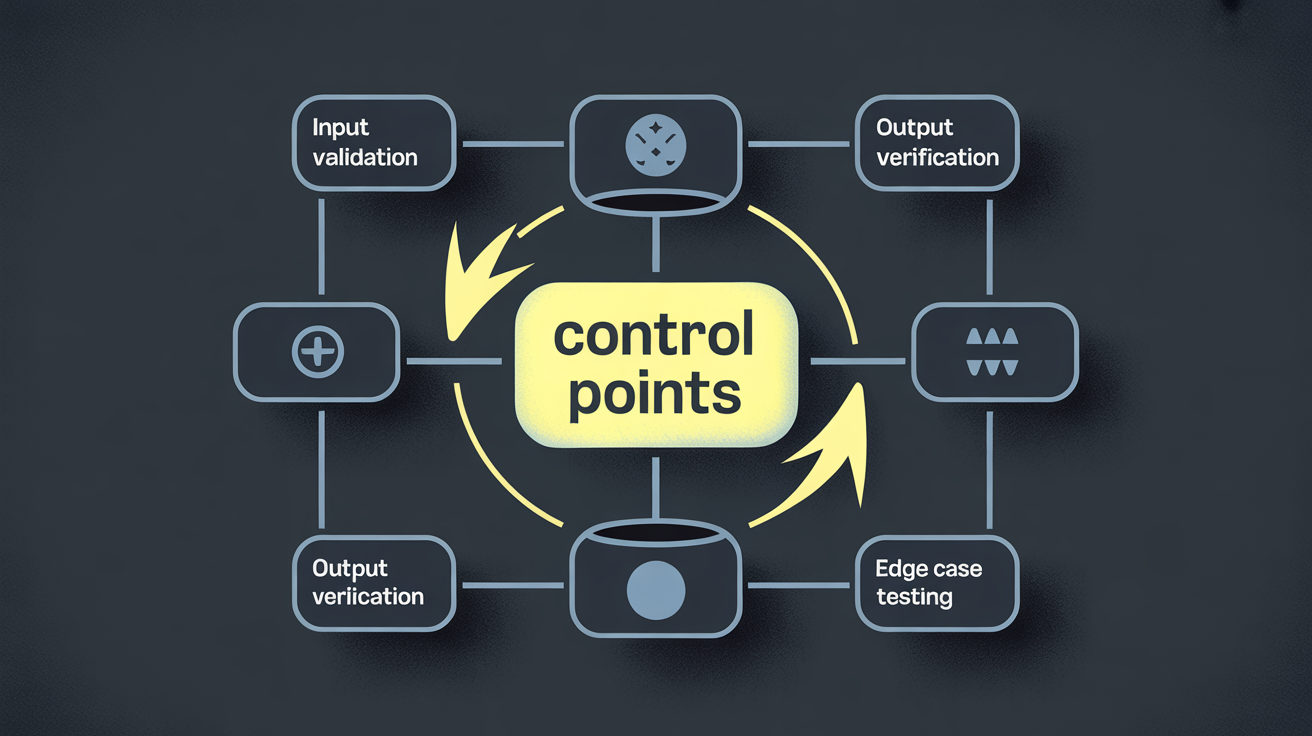
While AI-generated code accelerates development, these 5 critical checkpoints ensure it doesn’t compromise stability or security. Implement them to maintain velocity without sacrificing quality.
1. Pre-Commit: The First Line of Defense
What to vet:
-
High-risk areas (auth, payments, data processing)
-
Third-party dependencies (check for vulnerabilities via
npm audit/snyk) -
Complex logic (could this be a “magic” code bomb?)
Tools for automation:
# Sample Git pre-commit hook if grep -q "skip_validation=True" $FILE; then echo "🚨 Dangerous flag detected!" >&2 exit 1 fi
Real example caught:
An AI added eval() for “dynamic flexibility” in a config parser – blocked pre-commit.
2. Pull Request: The Architecture Gate
Mandatory checks:
-
Service boundaries: Did the AI create hidden couplings?
-
DRY violations: Check for logic duplication
-
Contract changes: Verify API/Schema modifications
Team protocol:
“All AI-generated PRs require:
-
Architecture diagram update
-
Senior dev approval if touching core services”
3. Pre-Staging: The Integration Test Crucible
Critical tests to add:
Scenario: AI-generated inventory service Given 1000 concurrent users When stock levels hit zero Then verify no negative quantities occur
Toolchain:
-
K6 for load testing
-
Pact for contract verification
-
Test containers for dependency mocking
4. Production Rollout: The Canary Savior
Deployment safeguards:
-
Release to 2% traffic initially
-
Monitor for:
-
Abnormal error rates (NewRelic/Datadog)
-
Performance degradation (Pyroscope)
-
-
Automated rollback if:
-
errors_per_minute > threshold || latency_ms > 500
5. Post-Mortem: The Feedback Loop
AI-Specific Retro Questions:
-
“Did we need to generate this much code?”
-
“What manual review steps failed?”
-
“How can we improve our AI prompt guidelines?”
Example improvement:
After an AI caused a DB deadlock, teams now add:
# @ai-constraint: Must use row-level locking
The Control Checklist
For every AI-generated commit:
-
Understandability audit (Can junior devs maintain this?)
-
Security scan (Semgrep/SonarQube passed)
-
Architecture review (No silent service couplings)
-
Rollback plan (Tested in staging?)
Pro Tip:
Embed this in your CI/CD:
# .github/workflows/ai_safety_net.yml - name: AI Code Review uses: your-org/ai-guardrails@v2 with: risk_level: high require_human_review: true
Up Next: The Tool Deep Dive
In Part 3, we’ll configure Semgrep rules that automatically block dangerous AI patterns and implement AI-specific monitoring in Datadog.
Comments are closed